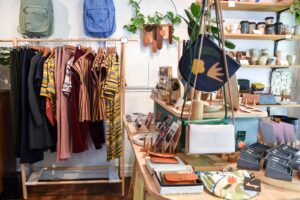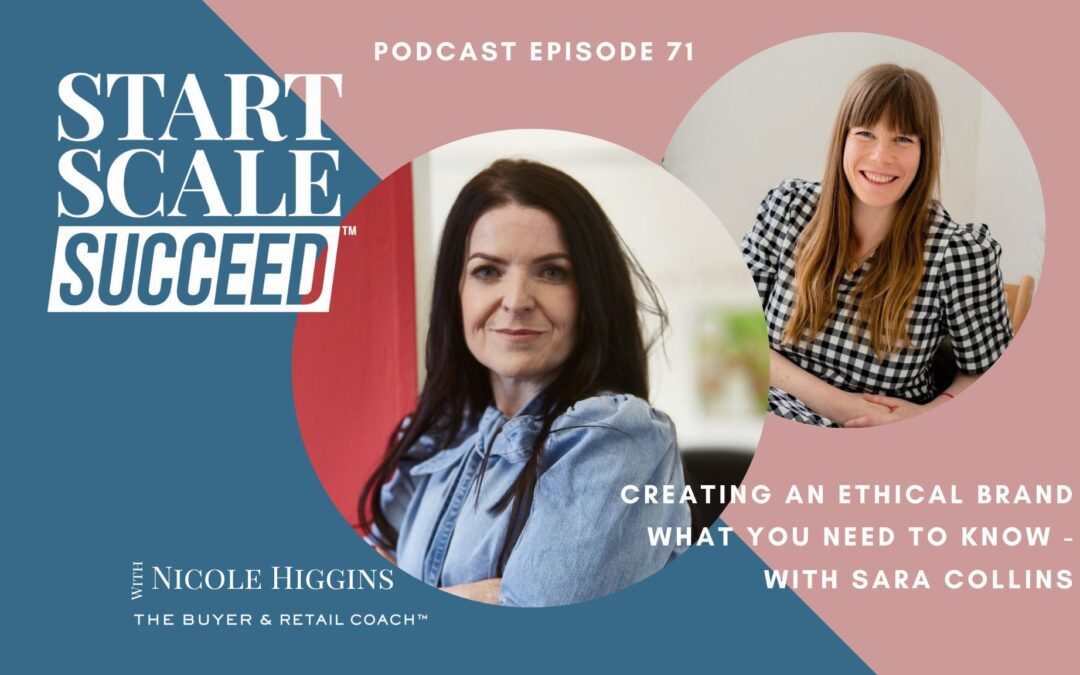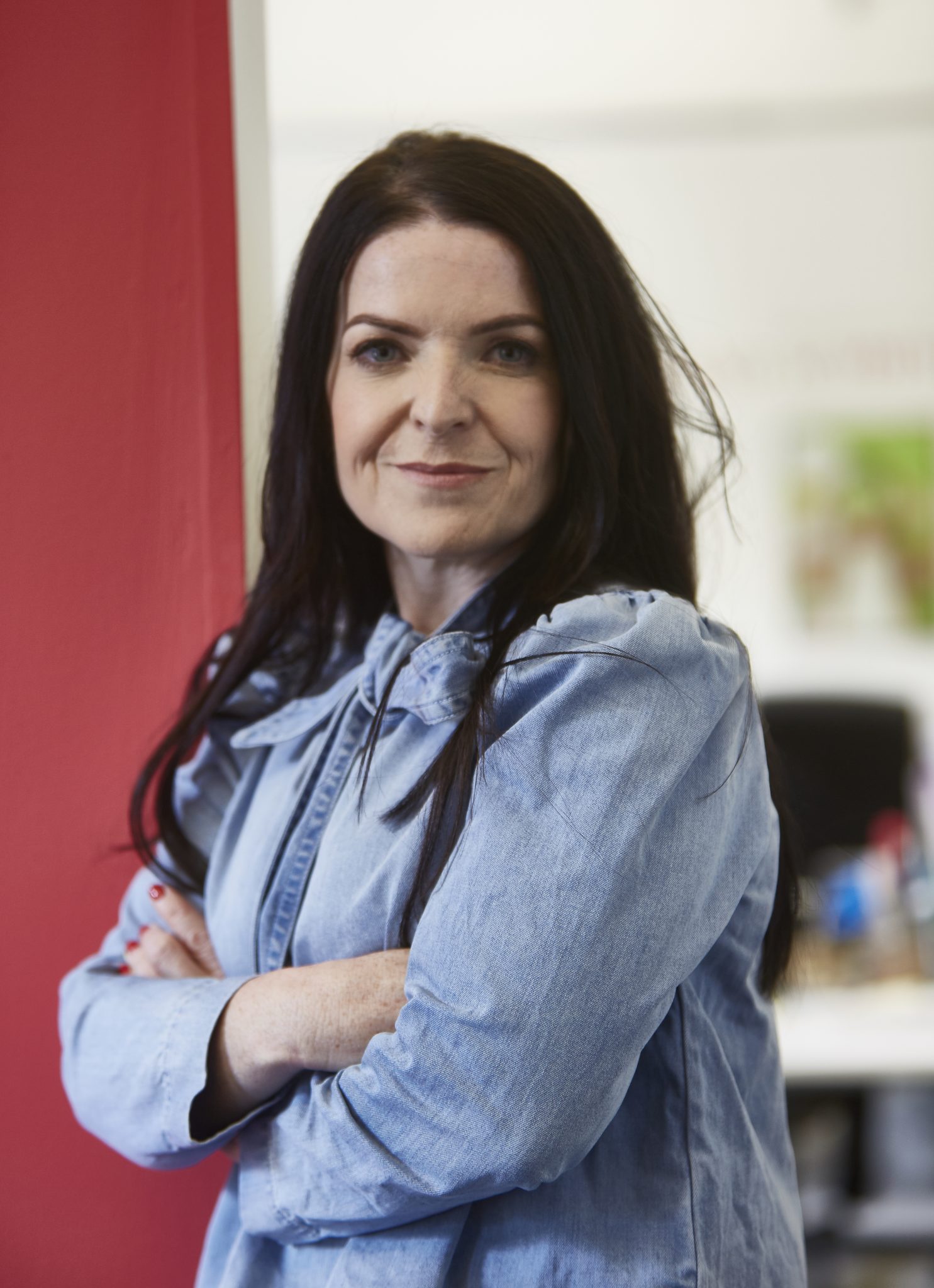How do you create a brand that is ethical? This is a question I am asked more and more as founders look to contribute positively to society’s wellbeing. How to you navigate the complexity of putting this into place? Sara Collins is an ethical product consultant, and was a guest on episode 71 of my podcast Start, Scale Succeed. Sara specialises in helping businesses build trusted relationships with quality, ethical manufacturers, and shares the key things you need to know when creating an ethical brand.
Creating an ethical brand what you need to know
Consumers today are more conscious than ever about sustainability, ethics and social responsibility. Many startups and brands want to establish ethical and sustainable practices, but it can be a complex undertaking. Here are some key factors to consider when creating an ethical brand:
Clearly Define Your Values
Avoid generic terms like “ethical” and “sustainable” – these are broad and vague. Take time to clearly define your brand’s values and the positive impact you want to achieve through ethical production. Think about issues like women’s empowerment, fair wages, worker safety, environmental sustainability, animal welfare, etc. Then determine what ethical production choices align with those specific values.
For example, if women’s rights are important to you, make an effort to partner with women-led or women-owned suppliers.
Ensure Fair Wages for All
One of the core tenets of ethical production is making sure all workers, including those at raw material suppliers, earn fair wages – not just the national legal minimum wage. Aim to have your suppliers pay a living wage, which refers to a wage high enough to maintain a normal standard of living in that country. Don’t just take suppliers at their word on wages – ask to see wage data, pay slips and third-party audit reports that provide evidence. Certifications like Fair Trade also verify living wages are paid.
Verify Health and Safety Standards
Worker health, safety and wellbeing should be non-negotiable priorities. Don’t just accept verbal assurances from suppliers about their safety standards. Ask for robust evidence like health and safety certifications and recent audit reports from credible third parties. Request virtual factory tours over video chat to visually inspect the actual conditions yourself. Make sure appropriate policies, training, protective equipment and first aid are provided.
Insist on Transparency from Suppliers
Reputable, ethical suppliers should readily provide detailed information about wages, benefits, working hours, health and safety policies, and labour practices. Lack of transparency is a major red flag. Be very wary of any supplier that refuses to openly share such information or tries to hide behind vague ethical branding claims. This “greenwashing” approach is unethical and deceptive.
Design Products for Quality and Durability
Build sustainability directly into your product design.
- Create high-quality, durable products from premium materials so they last longer vs cheap disposable items.
- Use solid construction techniques like double stitching.
- Make items easily repairable, and provide repair services.
- Design products so materials can be recycled or upcycled at end of life. This reduces waste and the need for frequent re-purchase.
Rethink Packaging
 Product packaging has huge implications for sustainability. But it’s often overlooked by brands focused only on the product itself. Review all packaging used, from transit packaging to retail packaging to e-commerce mailers. Look for opportunities to reduce unnecessary packaging, shift to recycled and recyclable materials, avoid plastic, and use alternative materials like cotton, bamboo or mushroom. Ask suppliers about their sustainable packaging options too.
Product packaging has huge implications for sustainability. But it’s often overlooked by brands focused only on the product itself. Review all packaging used, from transit packaging to retail packaging to e-commerce mailers. Look for opportunities to reduce unnecessary packaging, shift to recycled and recyclable materials, avoid plastic, and use alternative materials like cotton, bamboo or mushroom. Ask suppliers about their sustainable packaging options too.
Take an Incremental Approach
For established brands, completely overhauling longstanding supply chains to be ethical and sustainable overnight is likely unfeasible. Make incremental improvements over time instead. Set ethical goals like sourcing 25% of materials sustainably in Year 1, 50% in Year 2. Be transparent with customers about your sustainability progress – they’ll appreciate the honesty.
By carefully thinking through these key factors, you can develop a brand and supply chain well-aligned with your ethical values. It takes dedication, but the impact is well worth the effort.
Thank you so much Sara, you can listen to the whole podcast here.
RESOURCES:
Free personal carbon footprint calculator which can be a great place for people to start seeing what areas they can focus on within their business – https://www.carbonfootprint.com/calculator.aspx
For more in depth information listen to the full podcast episode here.
I hope that this post helps you to continue on your journey to success and if you need any extra support then check out my free resources on my website, follow me on Instagram, subscribe to my monthly newsletter or get in touch at nicole@thebuyerandretailcoach.com
https://thebuyerandretailcoachltd.as.me/discoverycall Book a free discovery call to see how we can work together and how I can help you with your business or idea
https://thebuyerandretailcoachltd.as.me/powerhour Book a power hour with and get the clarity of what your next steps need to be and your questions answered.
The Buyer and Retail Coach is a global retail expert with over 18 years experience working in the industry as a buyer and head of buying for companies such as Primark, M&S, and George at Asda, developing and sourcing a broad range of products from Lingerie to Health & Beauty and driving strategies and innovation.
Having worked for the big blue chips, Nicole Higgins now brings that expertise and experience to entrepreneurs and SME’s to help you make your product ideas a reality, scale your business, and increase your bottom line and profits.


